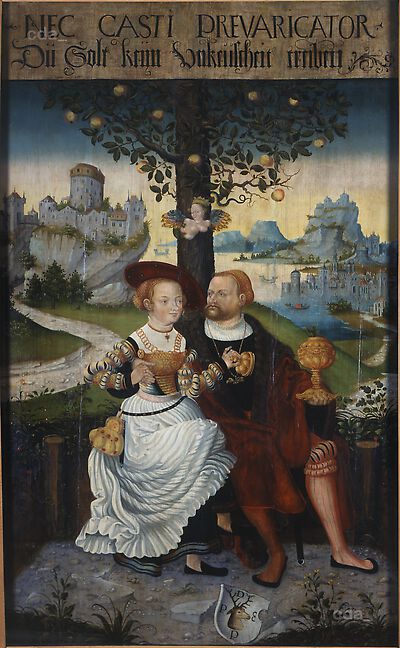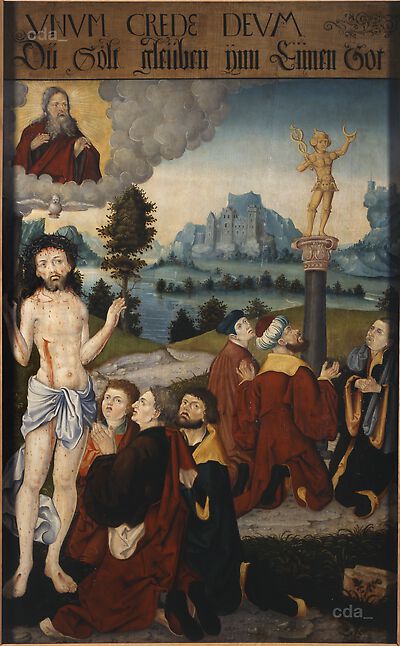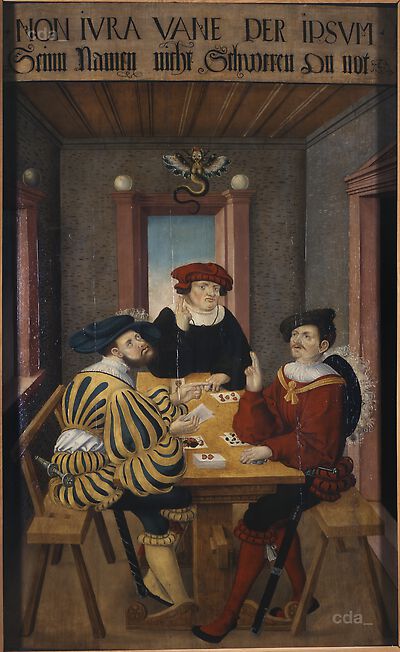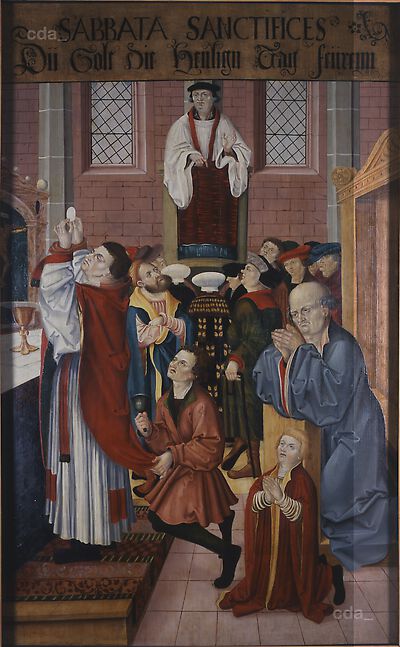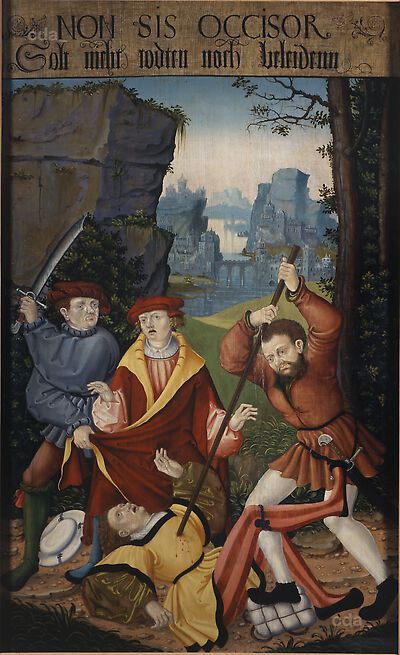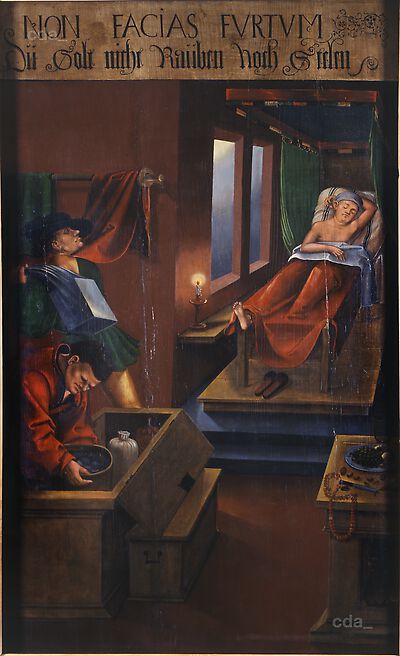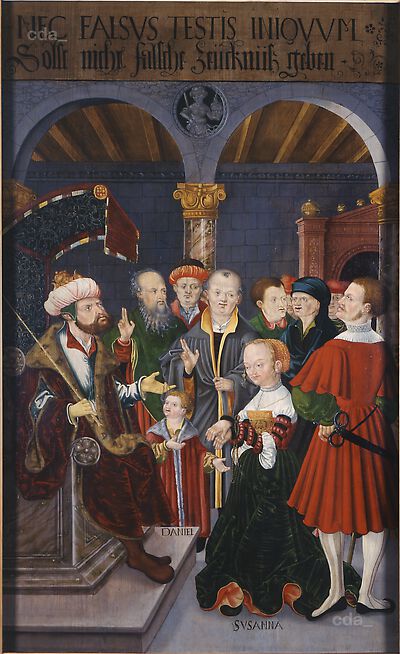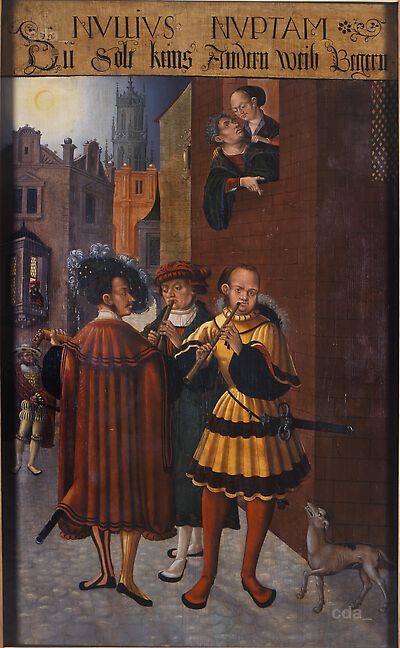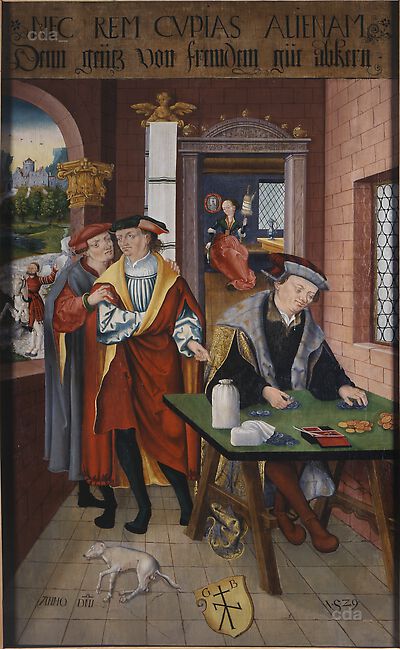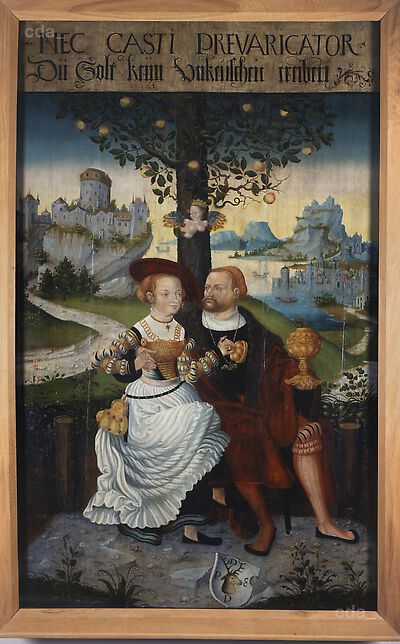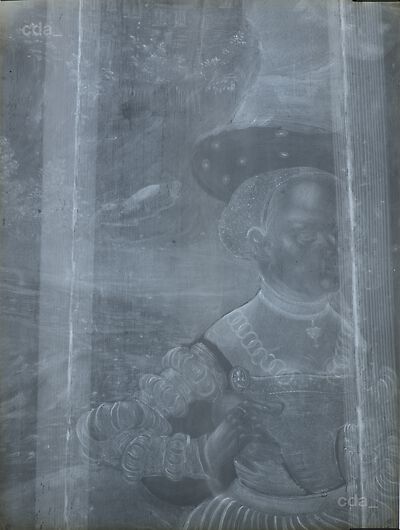- Attribution
- Hans der Maler
Attribution
| Hans der Maler | [Städtische Galerie Dresden, revised 2015] |
- Production date
- about 1528/29
Production date
| about 1528/29 | [Städtische Galerie Dresden, revised 2015] |
- Dimensions
- Dimension of painted surface: 137 x 86.5 cm
Dimensions
Dimension of painted surface: 137 x 86.5 cm
Dimension including frame: 145.6 x 95.2 cm
[Städtische Galerie Dresden, revised 2015]
- Signature / Dating
none
- Inscriptions and Labels
upper edge: naming the commandment
Inscriptions and Labels
Inscriptions, Badges:
upper edge: naming the commandment
- Owner
- Städtische Galerie Dresden
- Repository
- Stadtmuseum Dresden
- Location
- Dresden
- CDA ID
- DE_SGD_1968-37
- FR (1978) Nr.
- FR-none
- Persistent Link
- https://lucascranach.org/en/DE_SGD_1968-37/
